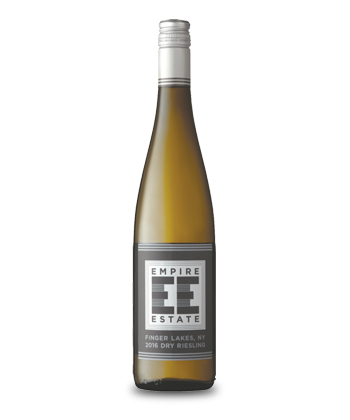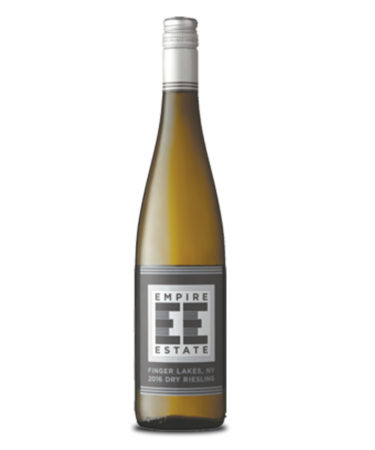In a column devoted to good wines that you might actually stand a chance of finding, the smallest-production wines with limited distribution are pretty much ruled out. Although online ordering from stores and wineries partly mitigates the problem, state regulations on shipping wine remain an often-frustrating and confusing patchwork.
This makes it hard for many people to get their hands on wines from small producers or even entire regions whose wines are not widely distributed. Which is why I was surprised that a superb Riesling I picked up recently in New York’s Finger Lakes actually had decent distribution beyond the area.

The wine is Empire Estate’s Dry Riesling 2016, one of the best wines I’ve had recently from this cool-climate region renowned for its Rieslings. The back label says that Empire Estate crafted the wine “to express the dry style of this dynamic grape.” And, in a nod to an unfortunate and still-widespread misconception, it notes that “Riesling doesn’t always have to be sweet!”
Indeed, this $19 wine is almost bone dry, with green apple and classic Riesling wet stone and subtle petrol aromas (don’t worry, it’s not the acrid smell you get passing the refineries on the Jersey Turnpike). In the mouth, it calls to mind a mix of white peach, lemon-lime, orange, and baking spice, all melding beautifully with its stony backdrop and minerals on the long finish.
It turns out that Empire Estate is not a winery or vineyard in and of itself, but a collaboration between Thomas Pastuszak, wine director at the NoMad hotel and restaurant in New York City, and Kelby Russell, the winemaker at Red Newt Cellars near Seneca Lake in Hector, N.Y. Pastuszak fell in love with the region and its wines while a student at Cornell. (Fun fact: The label was designed by the iconic New York graphic artist Milton Glaser.)
The grapes are sourced from a dozen vineyards in the area and the wine is made by Russell at Red Newt Cellars, with 5,000 cases of the 2016 produced. As for distribution, Pastuszak was able to put his New York wine savvy and connections to use in getting it distributed beyond the Finger Lakes and New York. Another springboard came from Whole Foods, which placed it nationally in all of its stores that sell wine late last year as part of its 10 “best in class holiday wines.”
“One of my missions in life,” Pastuszak told me, “is to get more people aware of the Finger Lakes.” His wine speaks volumes about the region, which is not just about Riesling and deserves more attention as the most important and exciting wine area on the East Coast.
